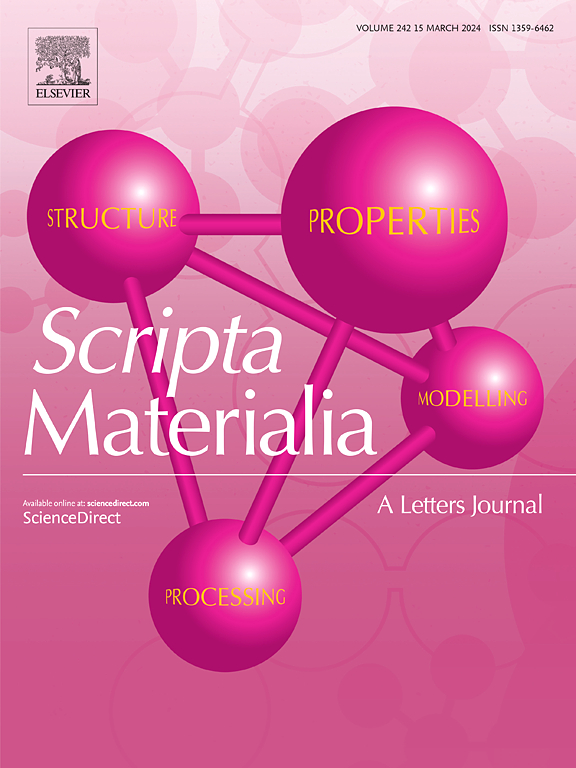Computational studies on BCC superalloys
IF 5.3
2区 材料科学
Q2 MATERIALS SCIENCE, MULTIDISCIPLINARY
引用次数: 0
Abstract
While face-centered cubic (FCC) superalloys have been extensively engineered and optimized, their performance is fundamentally limited by the solvus temperatures of key coherent strengthening precipitates. In contrast, body-centered cubic (BCC) superalloys offer the potential to significantly raise the solvus temperature by incorporating refractory elements. However, the widespread adoption requires overcoming critical challenges, including poor room-temperature ductility, limited creep resistance, and inadequate oxidation performance, which necessitates new alloy design and microstructure optimization. Given the inherent complexity of multicomponent systems, computational tools play a vital role in guiding experimental efforts by screening the massive compositional space in search for potentially ductile BCC and B2 solid solutions, mapping the intricate free-energy landscapes across a high-dimensional space of compositional and processing variables in search for transformation pathways leading to desired microstructures. This viewpoint article summarizes state-of-the-art in computational design of BCC superalloys, and outlines promising future directions in this rapidly evolving field.
BCC高温合金的计算研究
虽然面心立方(FCC)高温合金已经得到了广泛的设计和优化,但其性能从根本上受到关键相干强化析出相的溶剂温度的限制。相比之下,体心立方(BCC)高温合金通过加入耐火元素,提供了显著提高溶剂温度的潜力。然而,合金的广泛应用需要克服一些关键的挑战,包括室温延展性差、抗蠕变能力有限和氧化性能不佳,这就需要新的合金设计和微观结构优化。考虑到多组分系统固有的复杂性,计算工具在指导实验工作中发挥着至关重要的作用,通过筛选大量的组成空间来寻找潜在的韧性BCC和B2固溶体,在组成和加工变量的高维空间中绘制复杂的自由能景观,以寻找导致所需微观结构的转化途径。本文总结了BCC高温合金计算设计的最新进展,并概述了这一快速发展领域的未来发展方向。
本文章由计算机程序翻译,如有差异,请以英文原文为准。
求助全文
约1分钟内获得全文
求助全文
来源期刊

Scripta Materialia
工程技术-材料科学:综合
CiteScore
11.40
自引率
5.00%
发文量
581
审稿时长
34 days
期刊介绍:
Scripta Materialia is a LETTERS journal of Acta Materialia, providing a forum for the rapid publication of short communications on the relationship between the structure and the properties of inorganic materials. The emphasis is on originality rather than incremental research. Short reports on the development of materials with novel or substantially improved properties are also welcomed. Emphasis is on either the functional or mechanical behavior of metals, ceramics and semiconductors at all length scales.
 求助内容:
求助内容: 应助结果提醒方式:
应助结果提醒方式:


